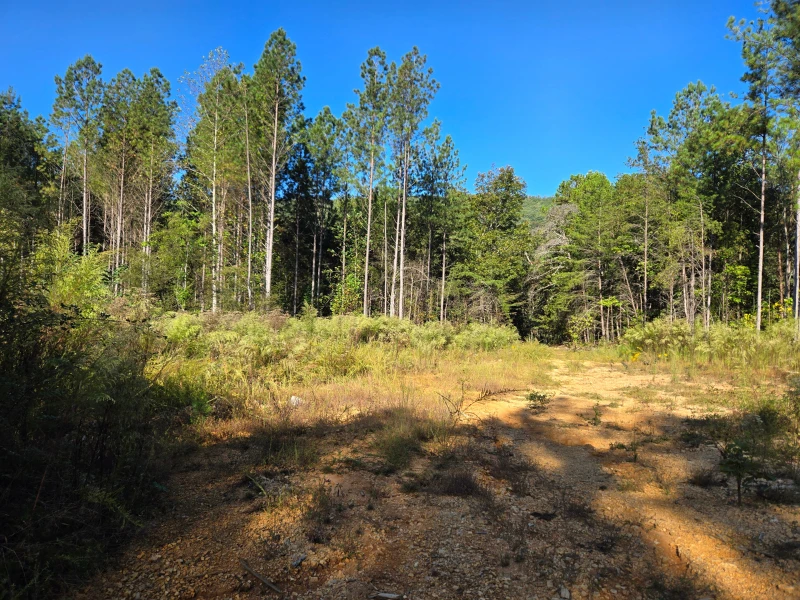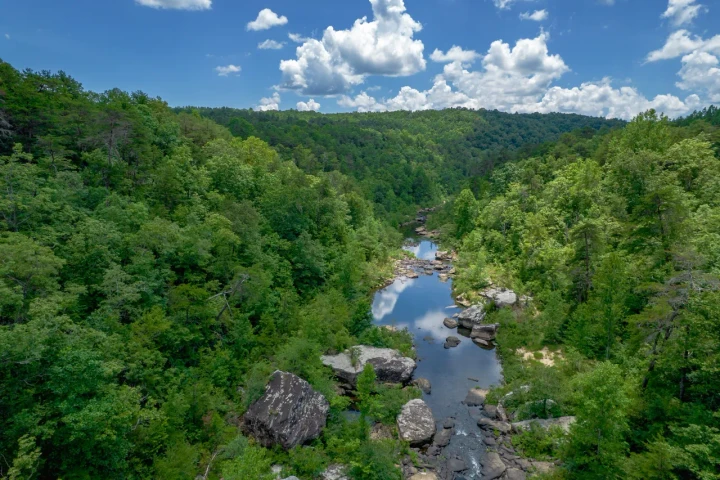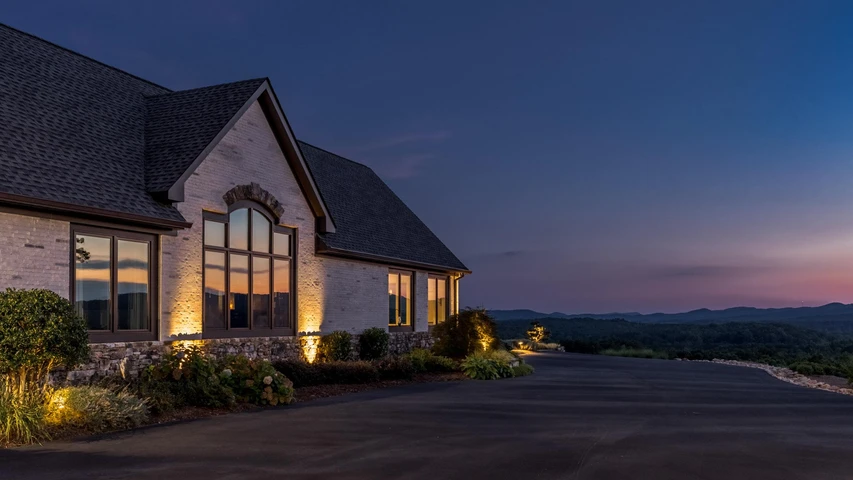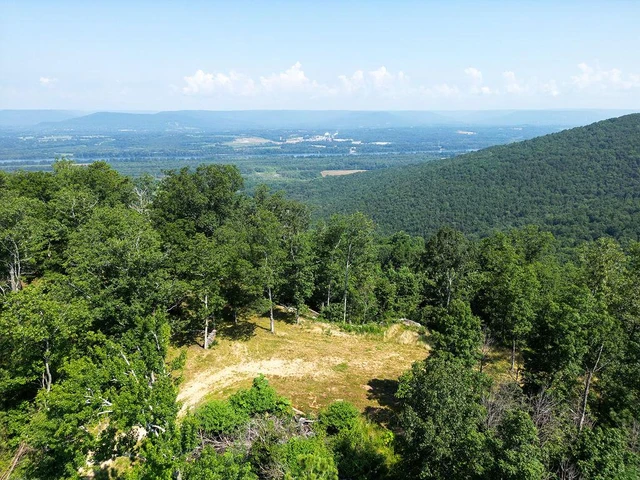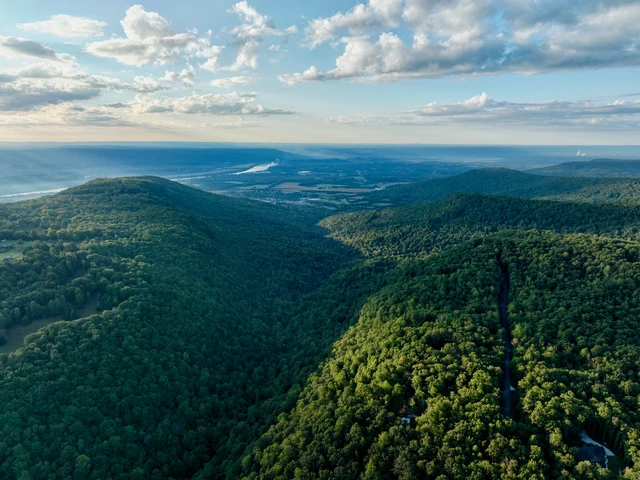
Sulphur Springs Tract
County Road 512, Sulpher Springs, AL | Lat/Lng: 34.6775, -85.5909
$257,000
84 ac.
10/10/2025
ACTIVE
Description
Sulphur Springs Tract is a premier timber and recreational tract in Northeast Alabama's Appalachian Mountains featuring:
-81 acres of well-managed, 20-year-old loblolly pine plantation
-Prime location just 2 miles from Interstate 59 (Exit 239)
-Scenic views from the hilltop and the potential to create a a cabin or homesite with panoramic views of the mountains
-Strong access with 940 feet of frontage on County Road 512
-Timber investment potential with recent thinning and projected financial maturity in 5-7 years
Location
The Sulphur Springs tract lies in the southernmost reaches of the Appalachian Mountains in Northeast Alabama. In this region, valleys are farmed or used for timber production, while ridges are typically covered in mature stands of mountain hardwoods. The property is bordered on three sides by other timber-producing tracts and on its east side by Interstate 59. From the gate, open farmland is visible to the north and west. The Tennessee River is less than 30 minutes away, and the surrounding Appalachian landscape provides abundant recreational opportunities tied to state and national parks.
Interstate 59 is easily accessible at Exit 239, only two miles from the tract. From the interstate, the community of Rising Fawn is just five miles north, offering fuel, groceries, dining options, and a hardware store. Fort Payne, Alabama, is located 18 miles south and provides hotels, dining, grocery stores, and a regional medical center. Several small airports serve the area, while Chattanooga Metropolitan Airport is less than an hour's drive. Atlanta's airport is about two and a half hours away.
Access
Sulphur Springs has strong access with direct frontage on County Road 512, a rock and county-maintained road. The property includes approximately 940 feet of frontage on CR 512. The entrance is gated and well-established. Public utilities are available a short distance from the tract, supported by evidence of recent nearby construction. Internal access is provided by nearly a mile of logging roads and trails. Most are passable by 44 vehicles with good ground clearance, though some routes may require a Utv. These roads support timber operations and offer convenient access throughout the tract for recreational purposes.
Property Description
Under current ownership, the tract has been managed for timber production. Its location, accessibility, and proximity to utilities make it equally suitable for recreational or residential use. The terrain is hilly, with elevations ranging from 250 to 410 feet. Soils are well-drained and ideal for timber production.
From the hilltop, the property offers stunning views of the surrounding mountain ridges to the northwest and southeast. Clearing this hilltop would provide a permanent panoramic view and an excellent location for a cabin.
There is also a cleared area just inside the gate along County Road 512 that would be suitable for a home, camp, or cabin. Recent thinning of pine plantations has increased the property's wildlife habitat, improving both food sources and cover. Overall, the tract is well-suited for a wide range of recreational uses.
Timber Resource
A timber inventory was conducted in the summer of 2025. Timber volumes were provided by the current ownership's property manager. Product values were applied by F&W Forestry Services, Inc. Volumes and values are not guaranteed.
This tract has approximately 81 acres of a 20- year-old loblolly plantation. This plantation was thinned about two years ago and has since exhibited observable growth. If timber production is the primary objective, it should be allowed to grow for another 5 to 7 years. During that time, much of the pulpwood volume will grow into higher product classes such as chip-n-saw and sawtimber.
It would be expected to reach financial maturity between the ages of 25 and 28 in this market region, which should be the opportune time to harvest. If continued timber production is the goal, it should be replanted with loblolly pine after cutting. Timber growth can be enhanced by herbicide and fertilizer use if desired, as both normally show a return on investment. If aesthetic or wildlife objectives are primary over timber production, additional thinnings can also be considered.
Since it has been thinned, conducting prescribed burning is an option to enhance aesthetics and wildlife value. Conducting a burn every two to three years is recommended. In addition, periodic burning also reduces the chances of loss due to wildfire.
Details
County: De Kalb
Zipcode: 36350
Property Type One: Residential Property
Property Type Two: Timberland
Property Type Three: Hunting Land
Brokerage: Fountains Land
Brokerage Link: www.fountainsland.com
Nearby Listings

